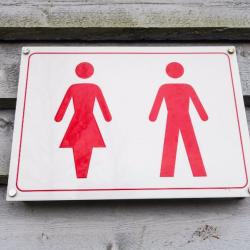Specific training of the staff members in charge of defining the contents and the style of the institutional communication is needed. Raising awareness about the importance of using a gender neutral communication is an important and necessary starting point. Then, training of the responsible staff on how to use gender sensitive expressions in textual communications and a balanced representation of genders in visual contents (images and video).
- Ideation
- >26.05.17
- Reviewing
- >
- Voting
- >13.06.17
- Implementation
Lack of Gender Neutral Communication

A gender neutral communication is a basic requirement for a system where there are no discriminations and inequalities among genders. The use of gender neutral expressions and visual contents may greatly help in fighting the cultural gender stereotypes existing in our society. However, the institutional communication of the university does not consistently use gender sensitive forms of textual and visual communication. As the Italian language commonly makes use of masculine nouns and pronouns (e.g. "he") when referring to two or more genders or to a person or people of an unknown gender, most people do not even notice the lack of gender neutrality in our language. Even the visual communication (e.g., use of video and images) often transmits gender stereotypes: for example, it is not rare to see pictures of ICT students showing a large majority of men. Even here, the pictures reflects the actual under representation of women in ICT field, hence the communication tends to be perceived as correct and normal, but in reality is likely to reinforce gender stereotypes.

Having clear and shared guidelines for a gender neutral communication that can be applied by all the different actors involved in the institutional communication services, at all levels and in all the departments/units of the university would help to achieve a gender neutral communication without requiring much effort in terms of economical resources.
Having clear and shared guidelines for a gender neutral communication that can be applied by all the different actors involved in the institutional communication services, at all levels and in all the departments/units of the university would help to achieve a gender neutral communication without requiring much effort in terms of economical resources.
Specific training of the staff members in charge of defining the contents and the style of the institutional communication is needed. Raising awareness about the importance of using a gender neutral communication is an important and necessary starting point. Then, training of the responsible staff on how to use gender sensitive expressions in textual communications and a balanced representation of genders in visual contents (images and video).
Users 1 | Votes 1 | Comments 1 |


